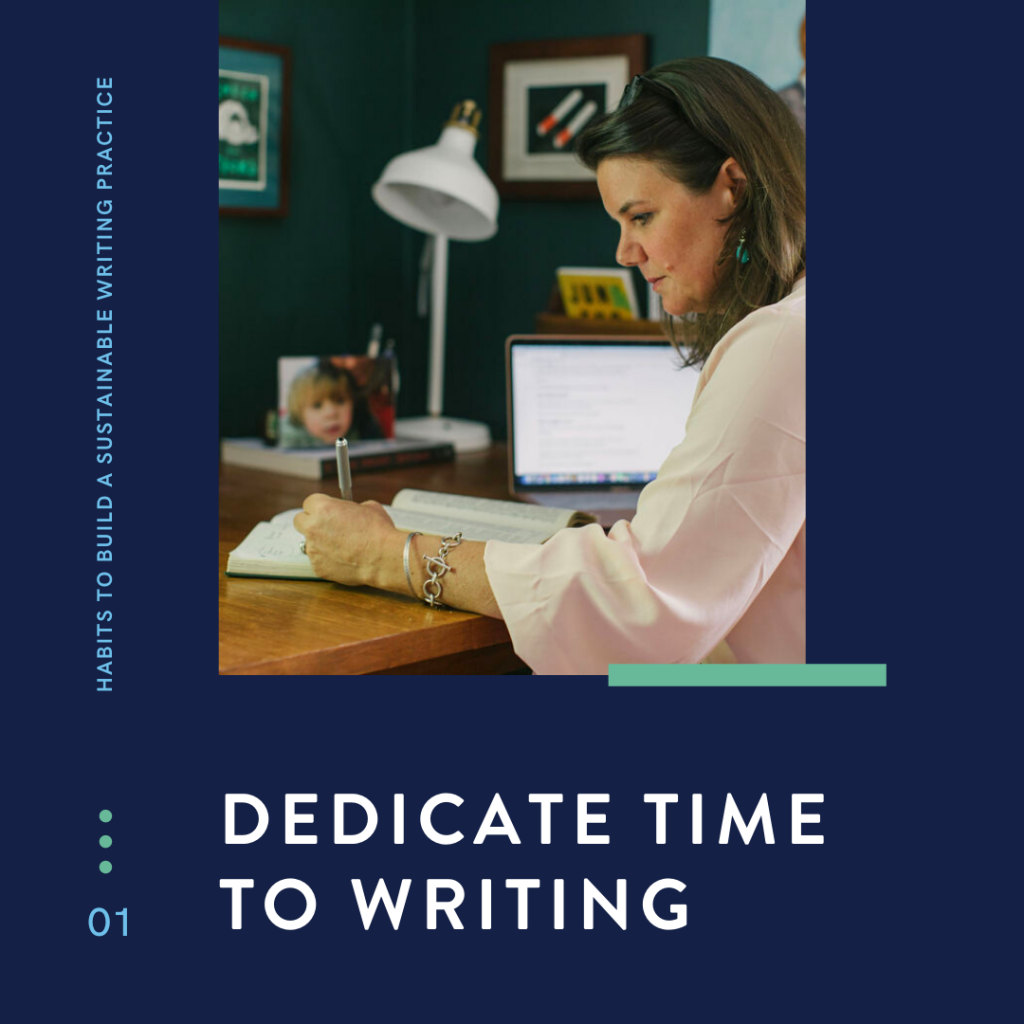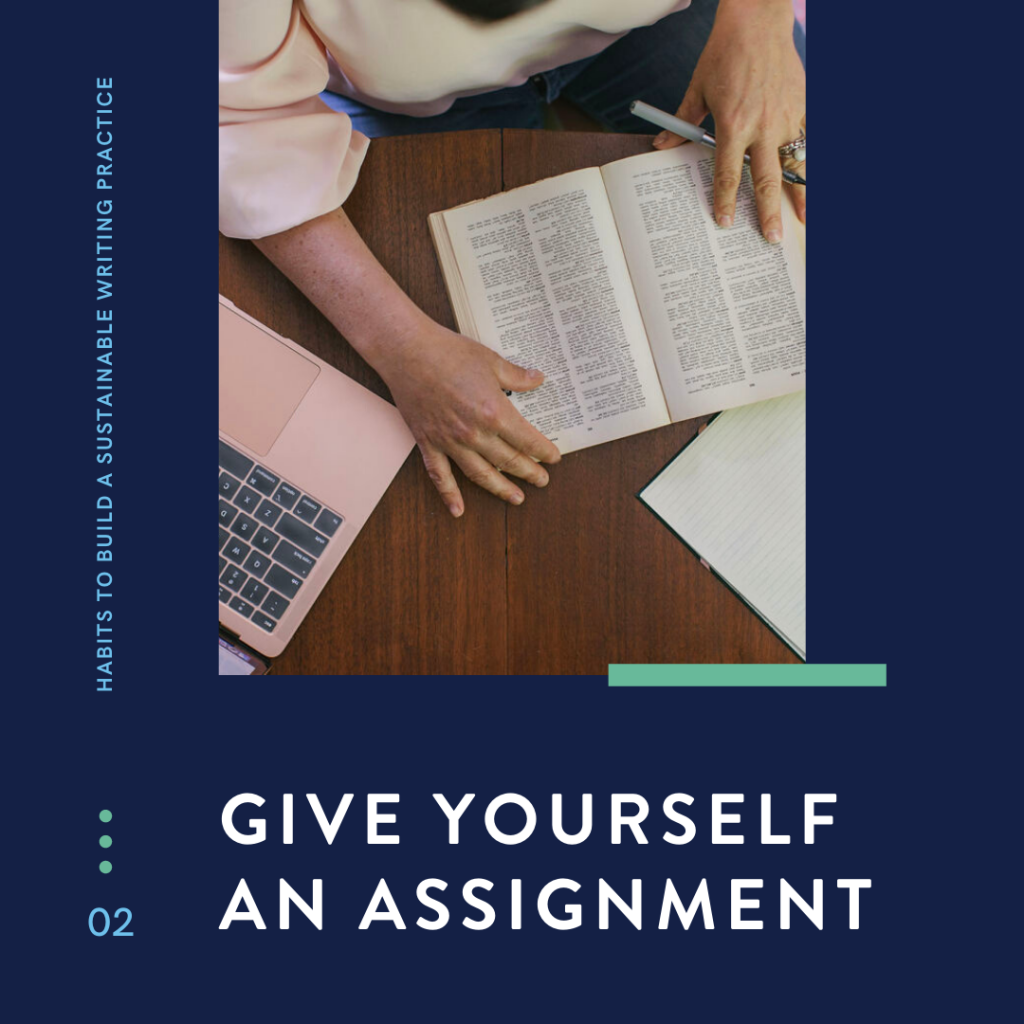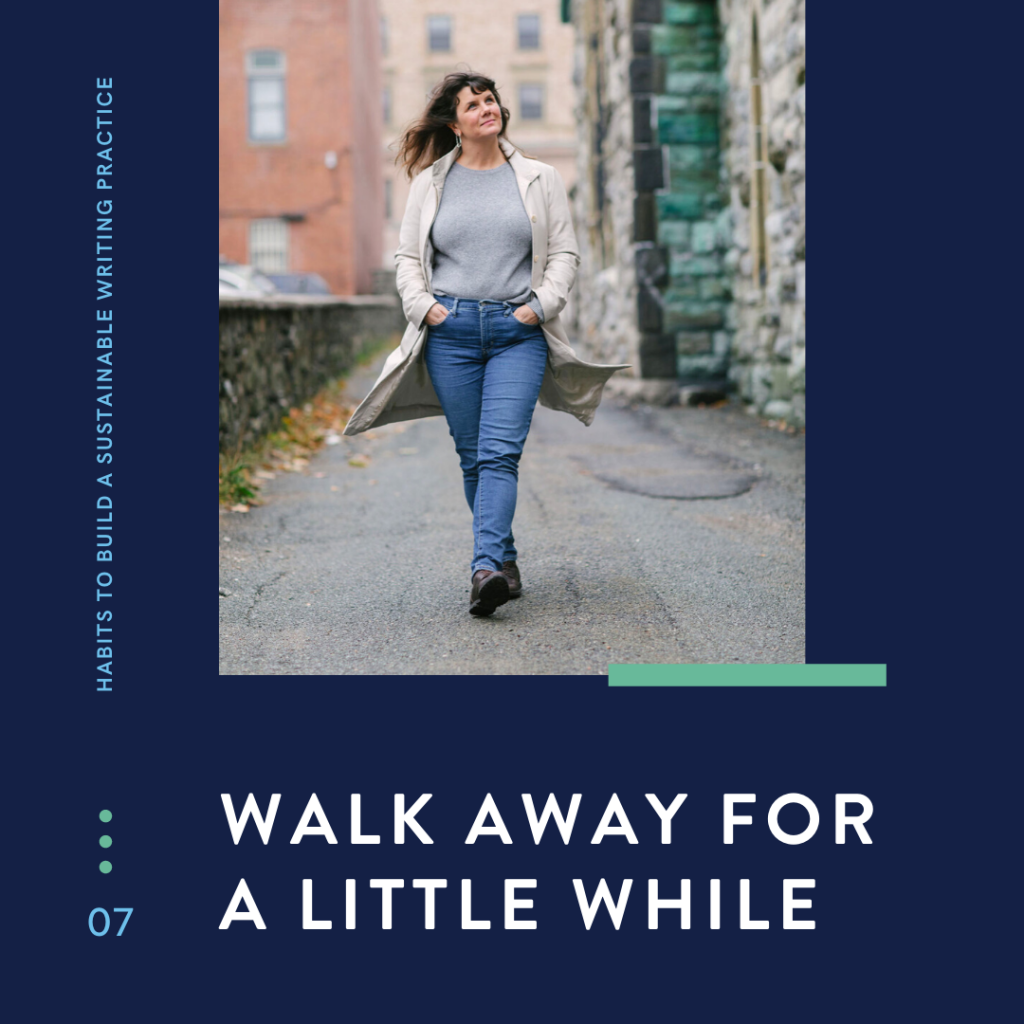I used to have romantic notions about writing practices and creativity that favoured a wild, up-all-night approach. But when I became an arts reporter, I started to notice that the best artists with the longest careers weren’t burning out on crazy, unsustainable routines. Most kept nine-to-five hours, which meant their muses knew where and when to find them. Plus, they were able to build habits and systems that fed their creative process.
These days, I know that planning, process and routine aren’t the enemies of creativity—they enable it.
In writing, the more you plan and the clearer your process, the better it will go. This is true for amateur or hobbyist writers, not just for the pros.
“By failing to prepare, you are preparing to fail.”
Benjamin Franklin
Here are the best ways to structure your writing practice to make it more successful and enjoyable.

Block Time for your writing practice
You need to dedicate time to writing. If you’re starting out, 15 minutes a day is perfect. Put it in your calendar and honour that daily date with yourself.
Ideally, it is the same time each day. Most of us are at our freshest in the morning. Before you open your email and start your social media scroll, turn your ringer off and just write. Guard that uninterrupted headspace. Pretty soon, you’ll be filling those 15 minutes with ease.

Have a Goal before you sit down
Free-form writing has its place, but it can be daunting, especially in the beginning. So give yourself an assignment.
What kind of writing do you want —or need— to do? It may be a Tweet or the start of a blog post, email copy or presentation. Whatever it is, when you sit down each day, know what you’re going to work on before you get to your computer or notebook.

Make an Outline to get started
Start with an outline before your rough draft. It can be quick and dirty. Just bullet points of what you want to convey, links to any resources or research, a jotting of hashtags or other add-ons, and your draft CTA. This roundup will help you get unstuck when you’re wondering what to write next.

make Research part of your writing practice
It’s not cheating to gather ideas and information from other sources. If you’re having trouble getting going, poke around for inspiration on Medium, media outlets, your favourite writer’s website, Pinterest or even Instagram. I get a lot of ideas from other writers on Twitter. You could even grab your favourite book off the shelf and review the parts you love.
Just be sure you’re using other’s work as a prompt or springboard, not copying from it. (And if you do want to use their genius in your piece, cite your sources, of course.)

Write a Headline to get YOUR pen going
Take a sticky note, and write down what your assignment’s about in a single sentence or phrase. My headline for this post: “Good habits for great writing.” Now stick it to your computer or notebook, and consult it when you’re feeling stuck or losing focus.
If you want to go a step further, you can write a nut graph. This is what journalists call the few sentences that lay out the story’s what and why it matters. In this post, my nut graph is: “In writing, the more you plan and the clearer your process, the better it will go. This is true for part-time or amateur or hobbyist writers, not just for the pros. Here are the best ways to structure your writing practice to make it more successful and enjoyable.”

Break it Down into days, not hours
If you’re crafting a longer piece, don’t try to get it done in one session. Newbie writers often have unrealistic expectations about how long a piece “should” take. I’ve had people assume I bang out a blog post in 30 minutes or less.
Um, no.
It often takes me hours, start-to-finish. Be realistic about what you can accomplish. Maybe your one week of 15-minutes-a-day segments will result in a single post. That’s realistic.

Walk Away for a little
A little distance is the best thing for perspective on what you’ve written, to put some time and space between writer-you and editor-you.
Ideally, you can walk away for an entire day so it can become a little unfamiliar, and you can return to your text with fresh eyes. Plus, if you’re working on a longer piece, like a blog post or podcast script, you will likely generate more ideas during that time you’ve stepped away.

Enlist a Reader
Get fresh eyes on your work by enlisting someone else to read what you’ve been working on.
Do you have a friend or colleague with whom you can swap drafts to share feedback? Having a writing buddy builds accountability, and it’s also a safe place for some early feedback.

Join a writing group
Facebook is chock-a-block with free and friendly groups for writers of all types and levels.
I’m a member of a bunch for copywriters and I find camaraderie, along with career advice and interesting questions. (And those groups are a terrific source of ideas for blog posts just like this.)

Take a Writing Challenge
Poke around Pinterest and you’ll find dozens of challenges you can use to bring your writing to another level. This could be a 30-day challenge to write every day for a month, or a challenge to use a new word every day. I have one of these challenges myself where I offer a 5-day blogging challenge to make sure you’re taking steps to publishing on a regular basis.
Join my 5-Day Blogging Challenge which builds on the tips I laid out above. By the end of the week, you’ll have a post ready to share. Woot!

Whatever your writing routine, make sure it’s something you will stick to. Choose a place you like to write and a time that works for you. And then? Just start.



Thank you for the inspiration.